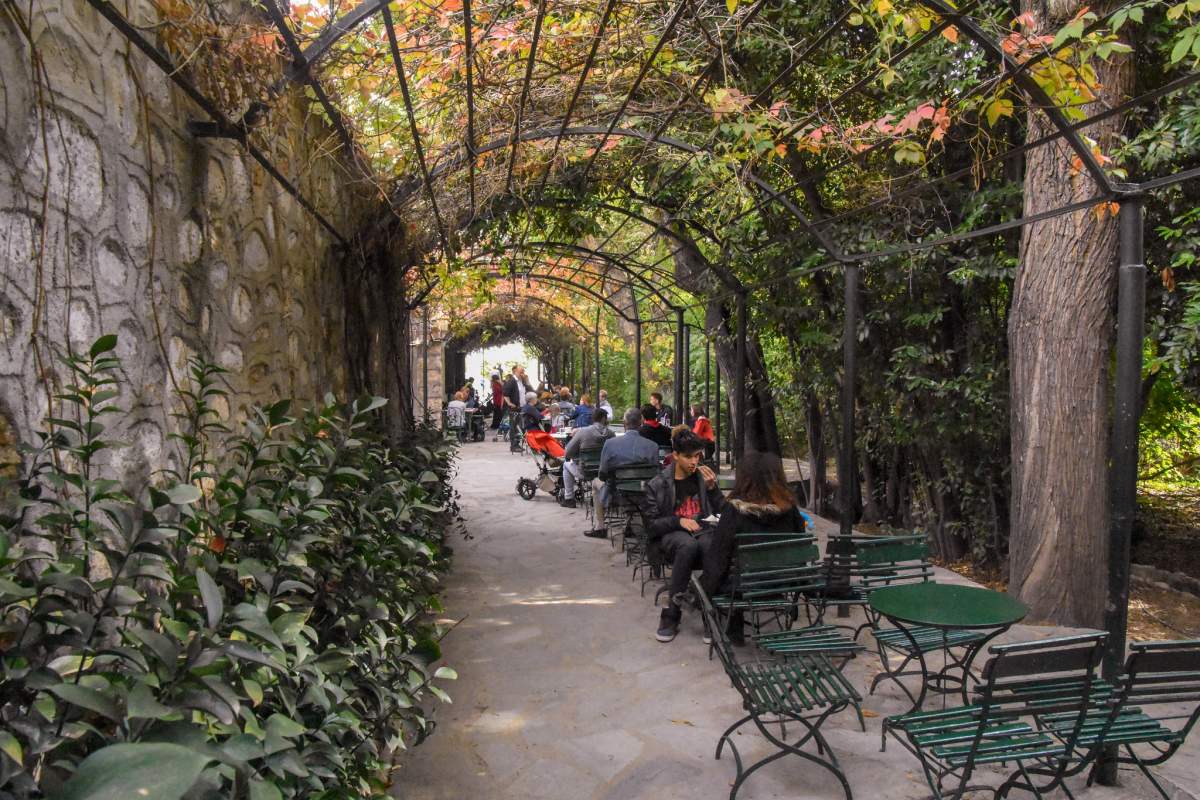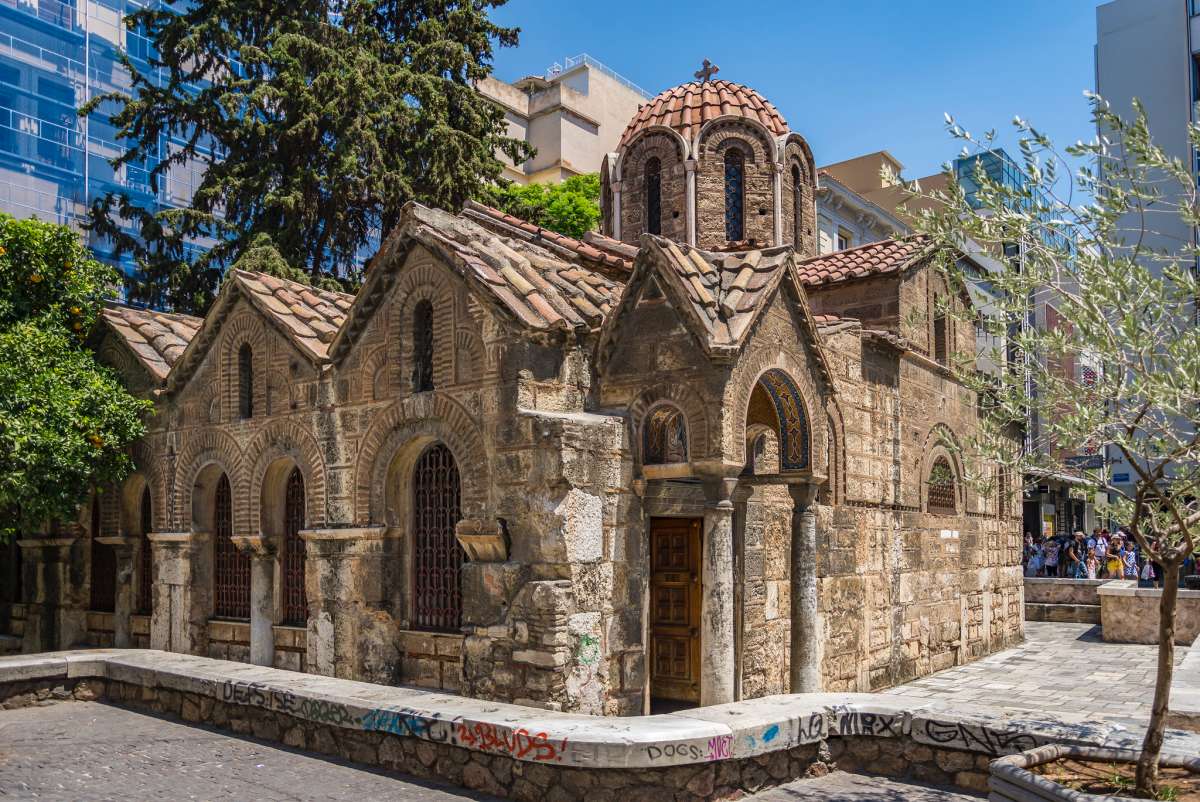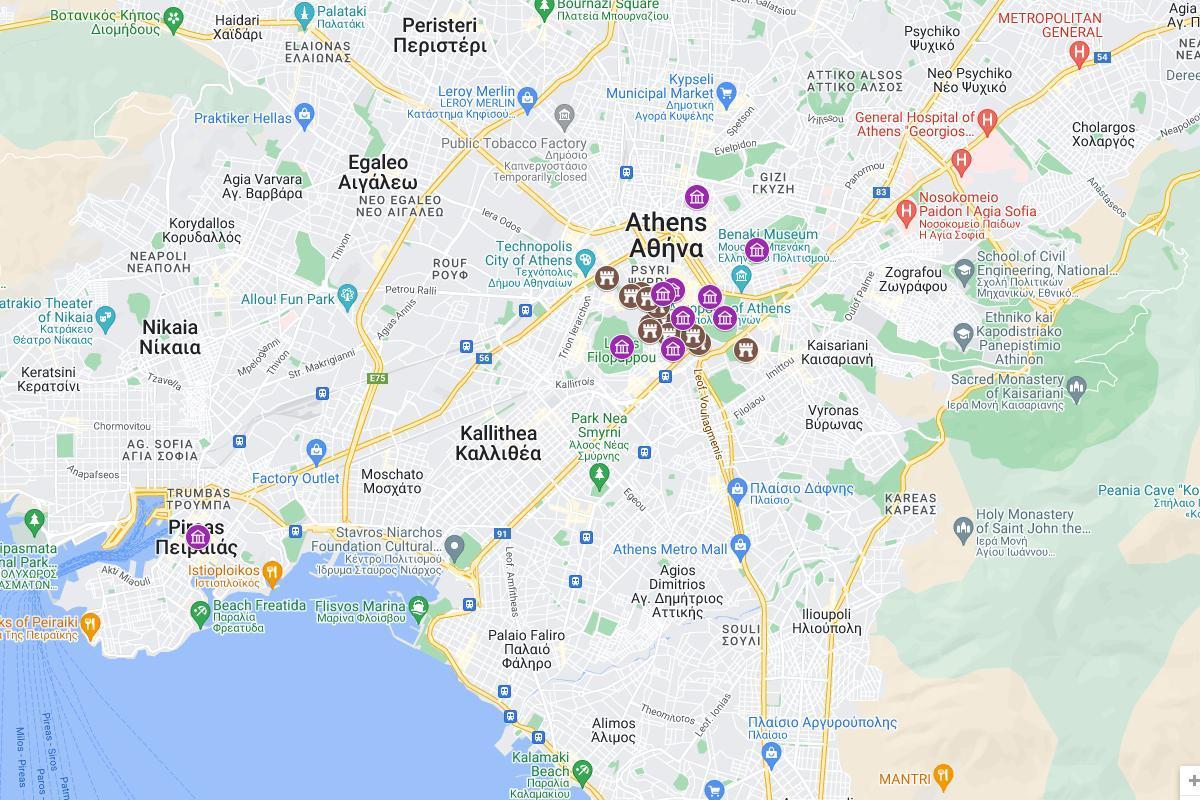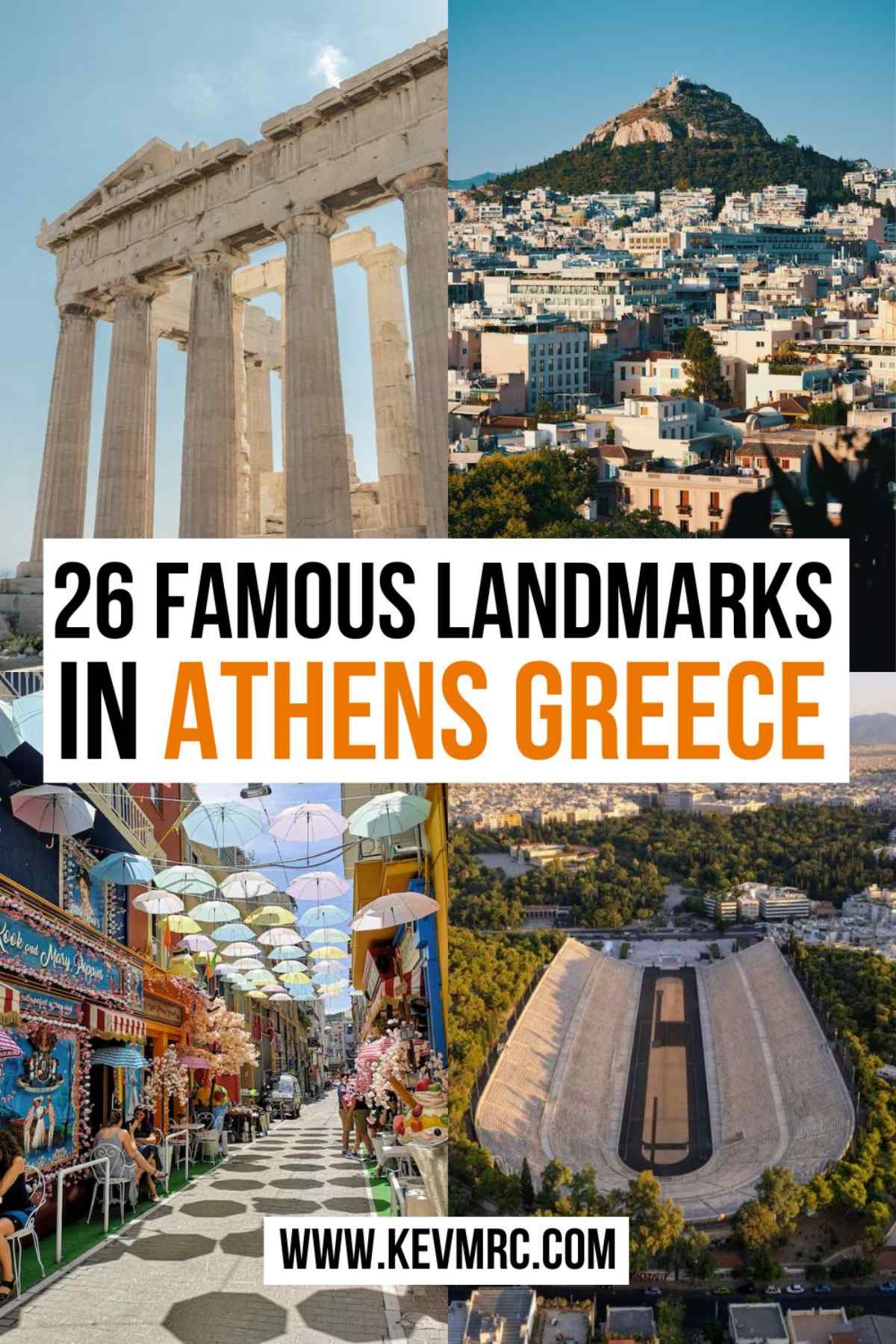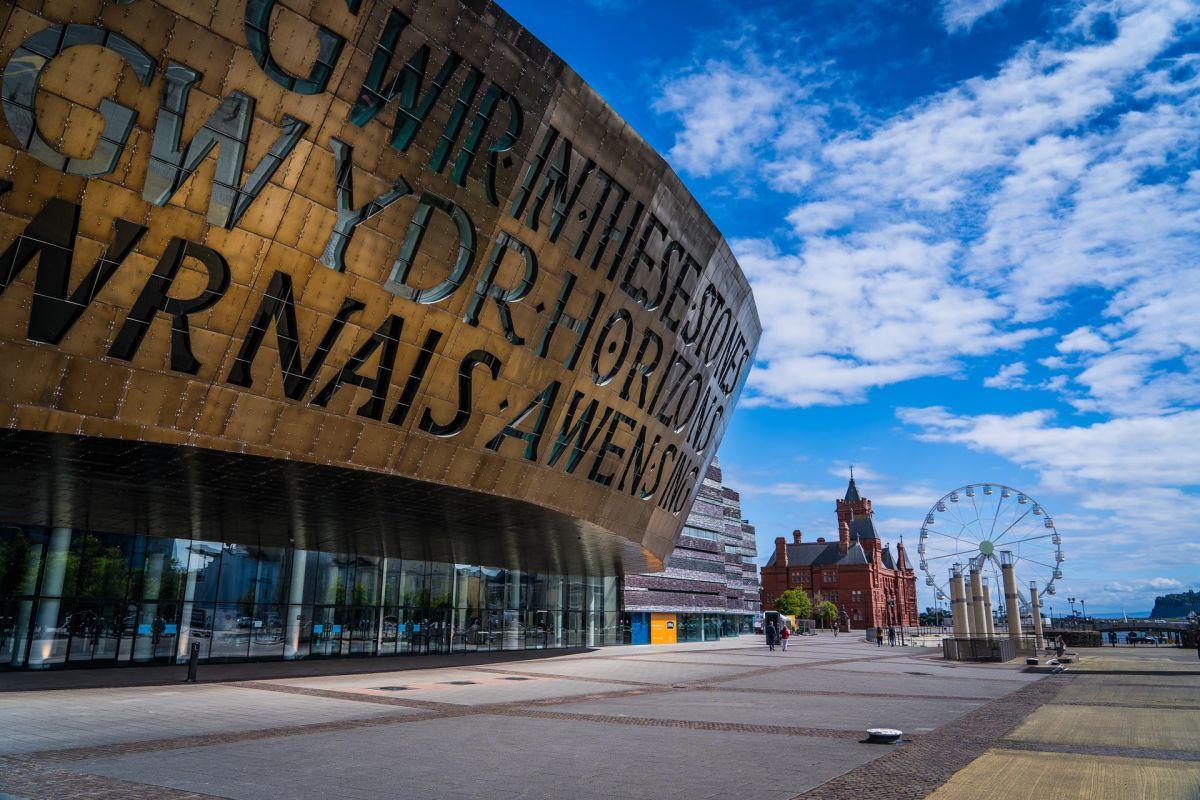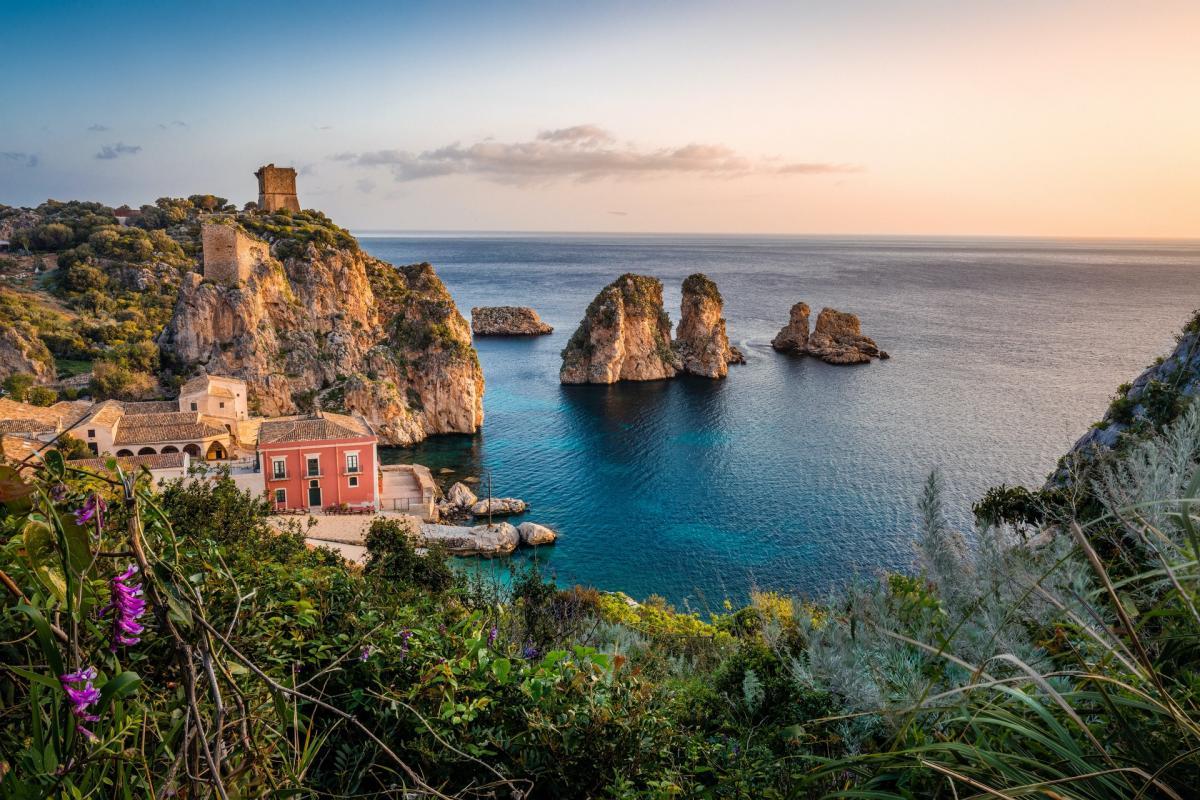26 Famous Athens Landmarks, Greece (100% worth a visit)
Known as the cradle of Western civilization, Greece‘s capital city has an extraordinary heritage that must be discovered at least once in a lifetime.
Whether you visit its remarkable archeological sites, stroll through its charming streets, or taste the delicious local cuisine, Athens never fails to amaze visitors from all over the world.
Among all of its monuments, wondering what are the most famous ones?
Here’s the list of the 25 most famous Athens landmarks! 🇬🇷
Full List of the 25 Famous Landmarks in Athens Greece
To make it simple, we’ve divided Athens famous landmarks into 2 separate categories: on the one hand the ancient landmarks, and on the other hand all the other types of monuments and attractions, natural ones included.
🏛 Athens ancient buildings:
- The Acropolis of Athens
- Parthenon
- Erechtheion
- Temple of Athena Nike
- Theatre of Dionysus
- Odeon of Herodes Atticus
- Ancient Agora of Athens
- Temple of Olympian Zeus
- Kerameikos
- Hadrian’s Library
- Hadrian’s Arch
- Temple of Hephaestus
- Roman Forum of Athens
- Panathenaic Stadium
- Stoa of Attalos
⛲️ Other famous monuments in Athens:
- Acropolis Museum
- National Archeological Museum
- National Garden
- Syntagma Square
- Mount Lycabettus
- Panagia Kapnikarea Church
- Plaka
- Monastiraki
- Philopappos Hill
- Piraeus
- Vouliagmeni Lake
Keep scrolling to learn more about each of these landmarks of Athens Greece, and get the free map.
Athens Ancient Buildings
When thinking of Athens, you can’t help but immediately picture its marvelous ancient monuments tracing its incredible history, those that make the city famous all over the world.
So, let’s start with the 15 most important ancient buildings in Athens.
1. The Acropolis of Athens
As one of the seven wonders of the ancient world, the Acropolis is certainly the most important landmark Athens has to offer, and one of the most popular tourist attractions in the world.
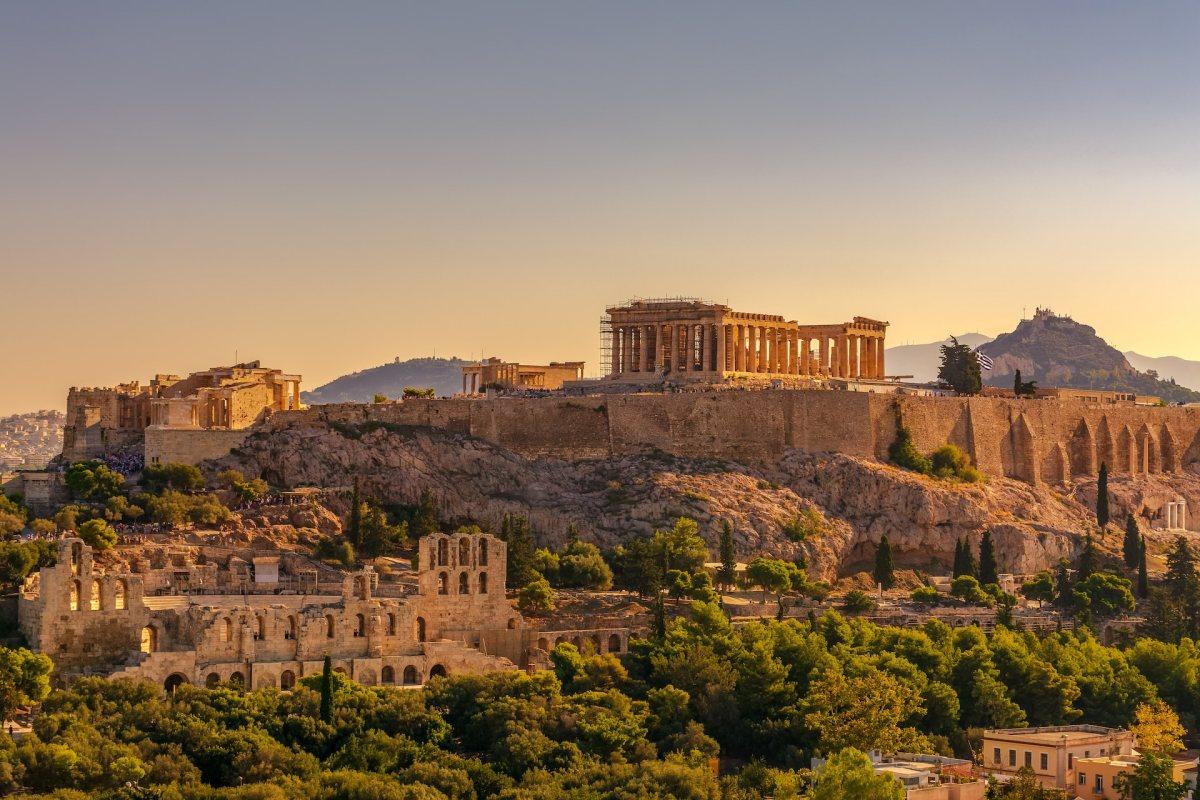
This great sanctuary dating back to the 6th century B.C. stands on a hill in the center of the Greek capital and can be seen from every corner of the city.
The Acropolis is home to the largest number of vestiges in Athens, including the Parthenon and the ancient theater of Dionysus, for the delight of visitors. If you want to visit this UNESCO World Heritage site, consider purchasing a skip-the-line ticket to avoid the long line-ups.
2. Parthenon
The Parthenon is a temple built in the 5th century BC and is dedicated to Athena, the goddess of war and protector of the city. Today, the Parthenon is the symbol of Athens and is part of the buildings of the Acropolis.
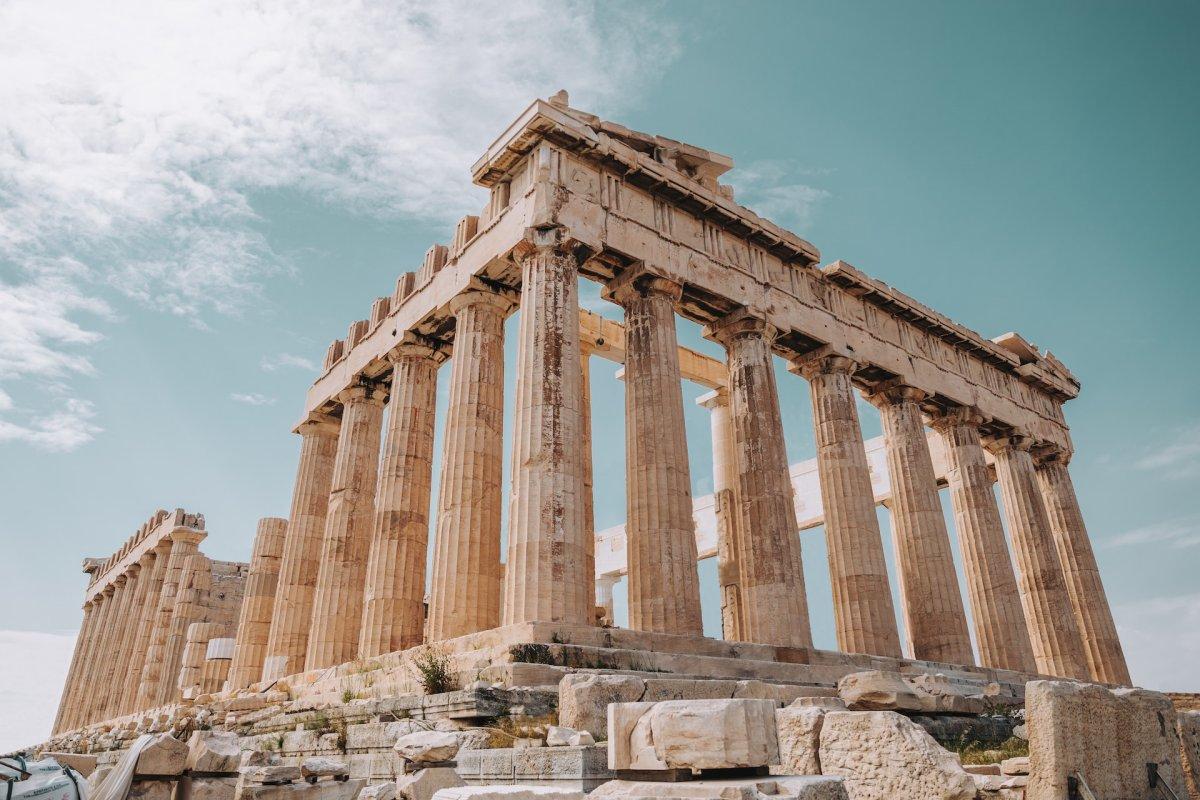
The building as we know it today is in fact the third version of the Parthenon. It was built by Pericles between 447 and 438 BC after the first ones were destroyed in wars. The monument has known many functions over the years since it was used as a church and even as a mosque under the Turks.
The Parthenon is an exceptional example of architecture that has inspired countless artists and lots of monuments pay tribute to it such as the British Museum or the US Supreme court.
3. Erechtheion
Also on the mythical Acropolis of Athens, another remarkable monument stands for several centuries, the Erechtheion. This is a temple whose unique architecture contains beautiful treasures of ancient Greece.
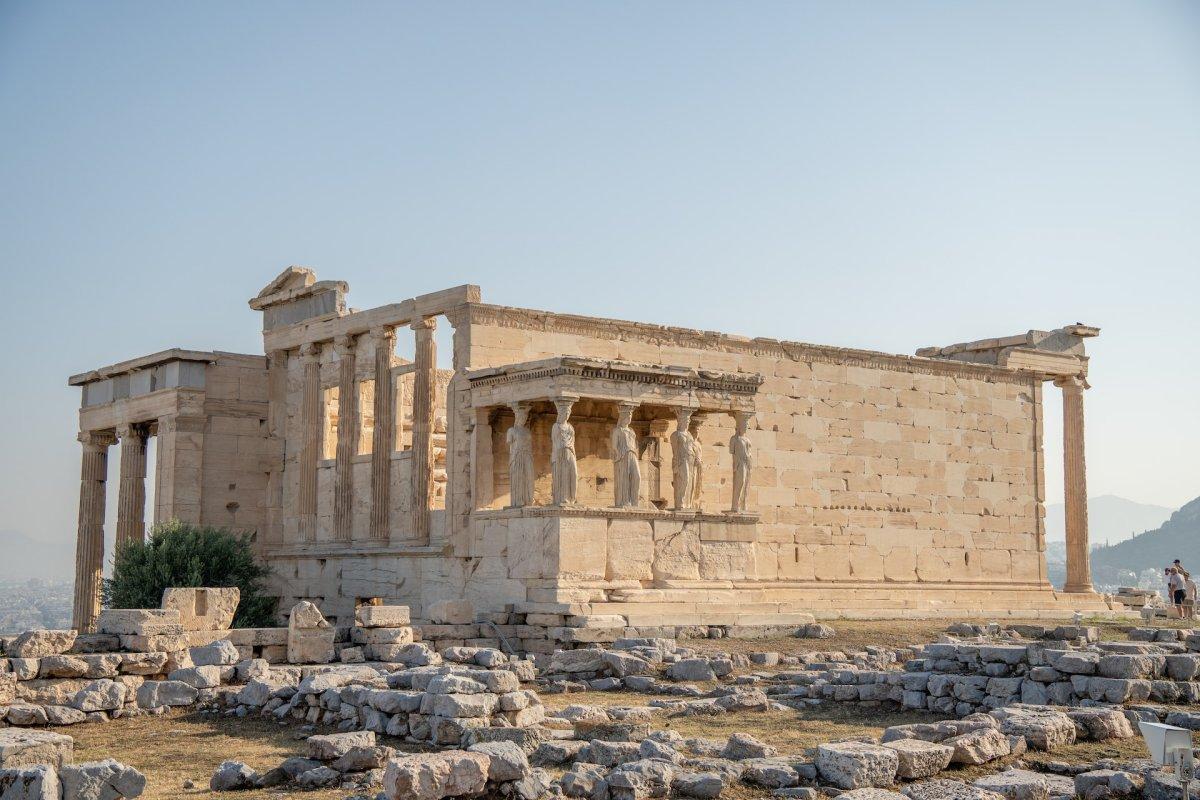
Built at the end of the 5th century BC, this temple is the last to have been erected on the famous hill of the Gods of Athens. This building replaces an ancient temple destroyed by the Persians during the war in 480 BC.
The Erechtheion is particularly outstanding for the beauty of the Caryatids, these iconic statues of draped women. Recognizable from afar, this part of the site is nevertheless a replica since the original Caryatids are today housed in the museums of the Acropolis, but also in the British Museum of London.
4. Temple of Athena Nike
As its name suggests, the temple of Athena Nike was built in honor of Athena on the southwest corner of the Acropolis between 432 and 421 BC, on the remains of an ancient temple destroyed by the Persians in 480 BC.
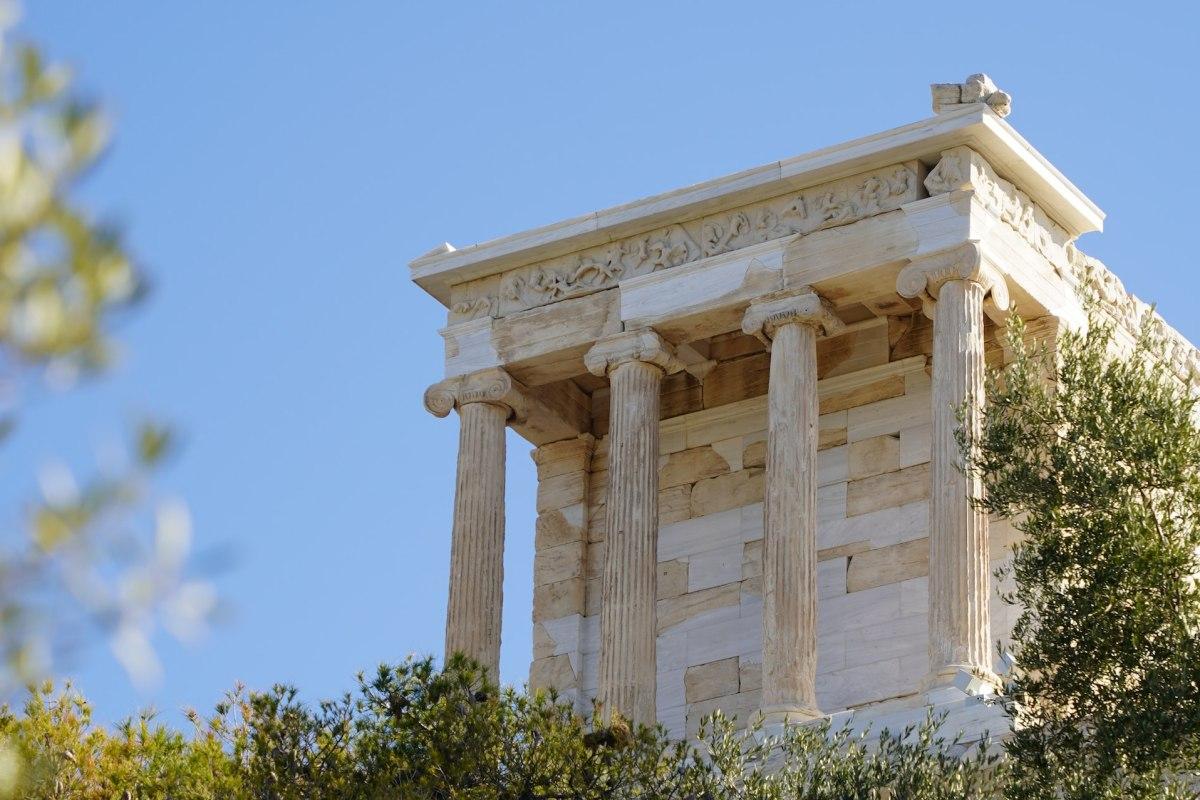
The temple of Athena Nike is the first Ionic temple on the site of the Acropolis and is easily recognizable thanks to its four huge monolithic columns.
The citizens used to come to this temple to pray to the goddess Nike, a form of Athena considered the goddess of victory, especially in times of war in the hope of coming out victorious.
5. Theatre of Dionysus
Located south of the Acropolis, this theater dating from the 5th century BC bears the name of the God of wine Dionysus.
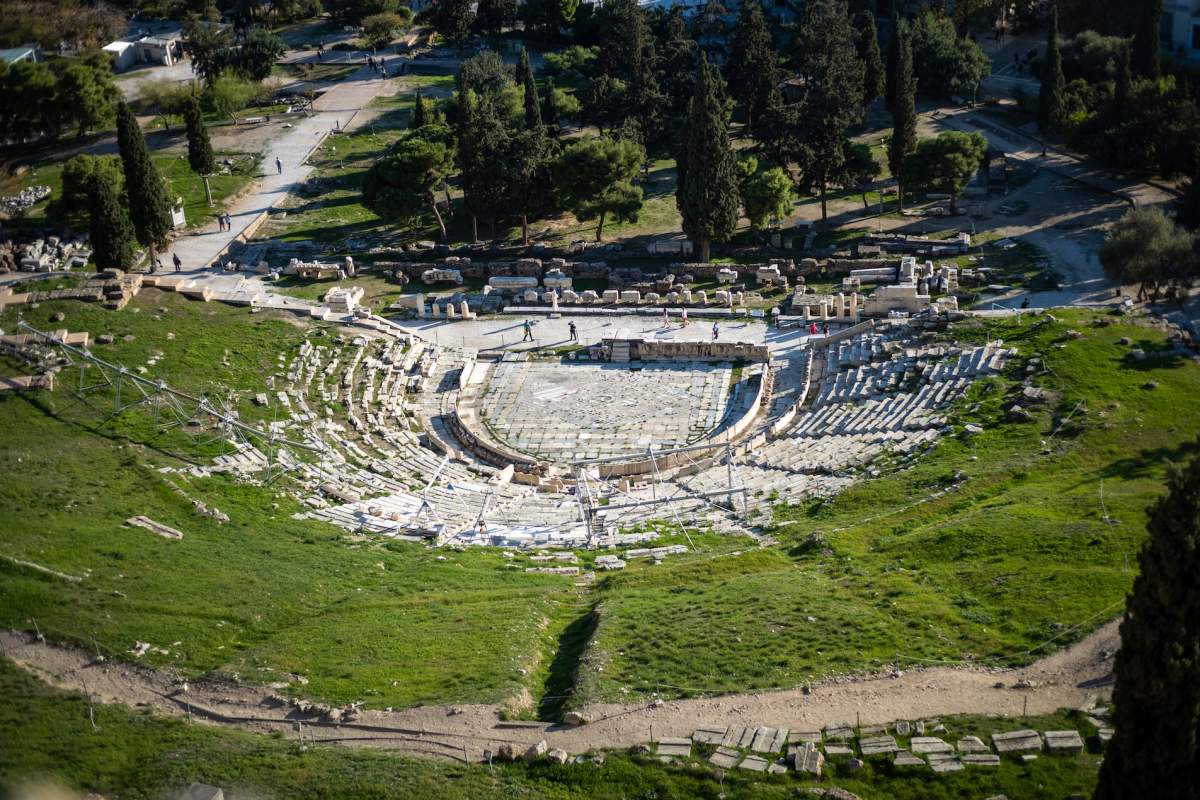
Initially, the Theater of Dionysus had only an earthen orchestra and wooden stage and bleachers that were replaced by stone bleachers when the structure collapsed due to its dilapidation. It used to accommodate no less than 17,000 spectators and had 78 rows of seats.
Forgotten in the Middle Ages, it was Richard Chandler’s research in 1765 that led to its rediscovery. In 1862, Johann Strack undertook further excavations that brought to light this great ancient jewel.
6. Odeon of Herodes Atticus
The Odeon of Herodes Atticus is another great theater located at the foot of the Acropolis that used to host musical and theatrical performances during ancient times. Actually, it’s one of the most important of its kind in the whole country.
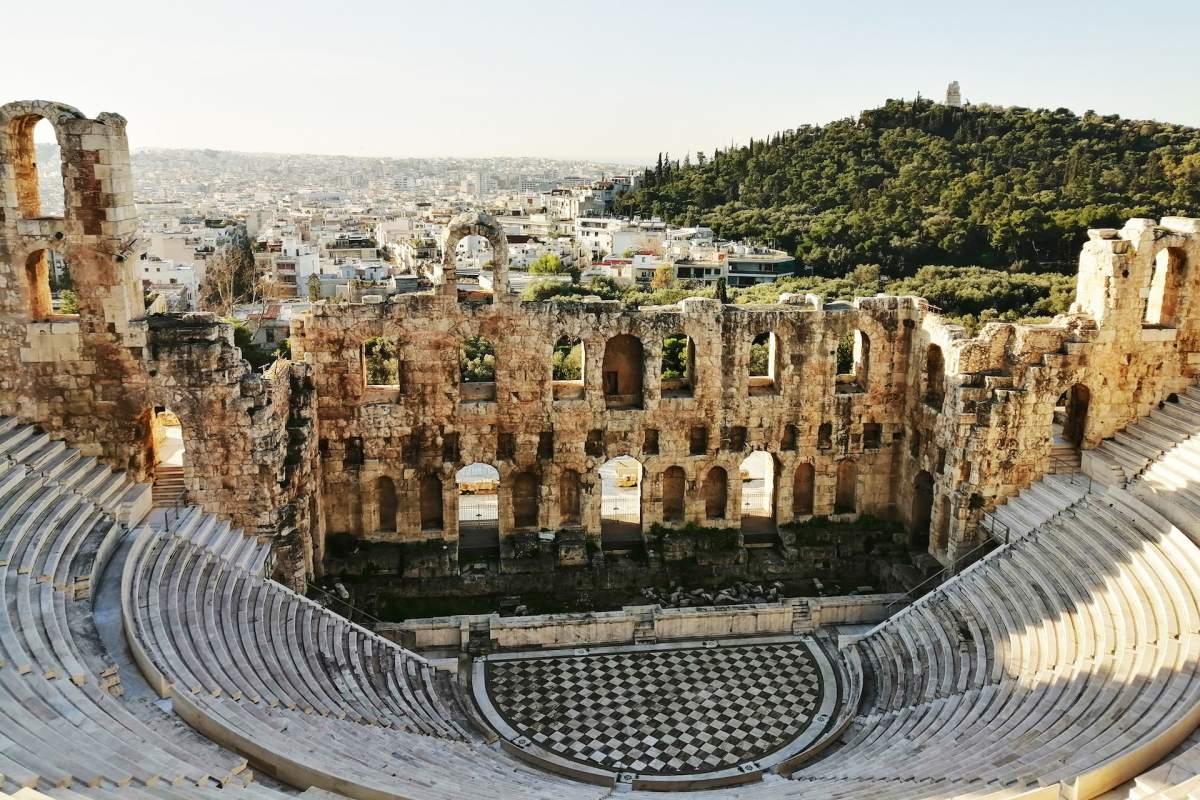
The monument was built in 161 by Atticus, a Roman senator and philanthropic magnate, in memory of his wife who died in 160. When it was inaugurated, the theater measured 87 meters in diameter and had a capacity of 5,000 spectators, which was quite low as the ancient city had about 290,000 people at this time.
After Atticus died, the theater was left abandoned and fell into ruins. It was not until the 1950s that restoration work was undertaken to bring back its former splendor. Since then, the theatre is used to host shows and important events such as Miss Universe in 1973.
7. Ancient Agora of Athens
The Ancient Agora of Athens is a large square located at the foot of the Acropolis, extending between the Kolonos Agoraios hill to the west, and the Areopagus hill to the south.
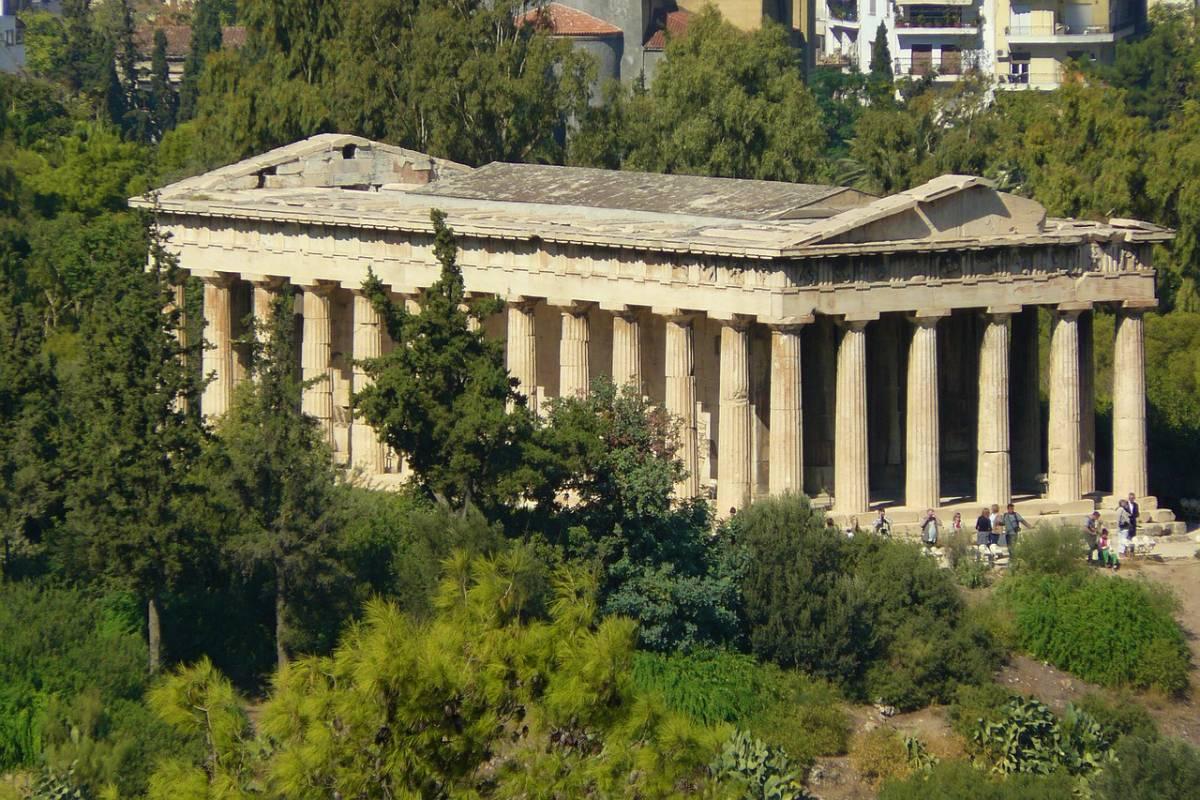
This is an immensely important landmark as it is considered the birthplace of democracy and the administrative, political, cultural, philosophical, and commercial center of Athens.
While the first traces of life here date back to the Neolithic (3000 BC), it’s from the 6th century that the Athenians walked in the Agora to trade, play politics and take part in social, cultural, and religious activities.
8. Temple of Olympian Zeus
Also known as the Olympieion, the Temple of Olympian Zeus is one of the most outstanding Greek landmarks in Athens due to its 15 still-standing Corinthian columns of 17 meters.
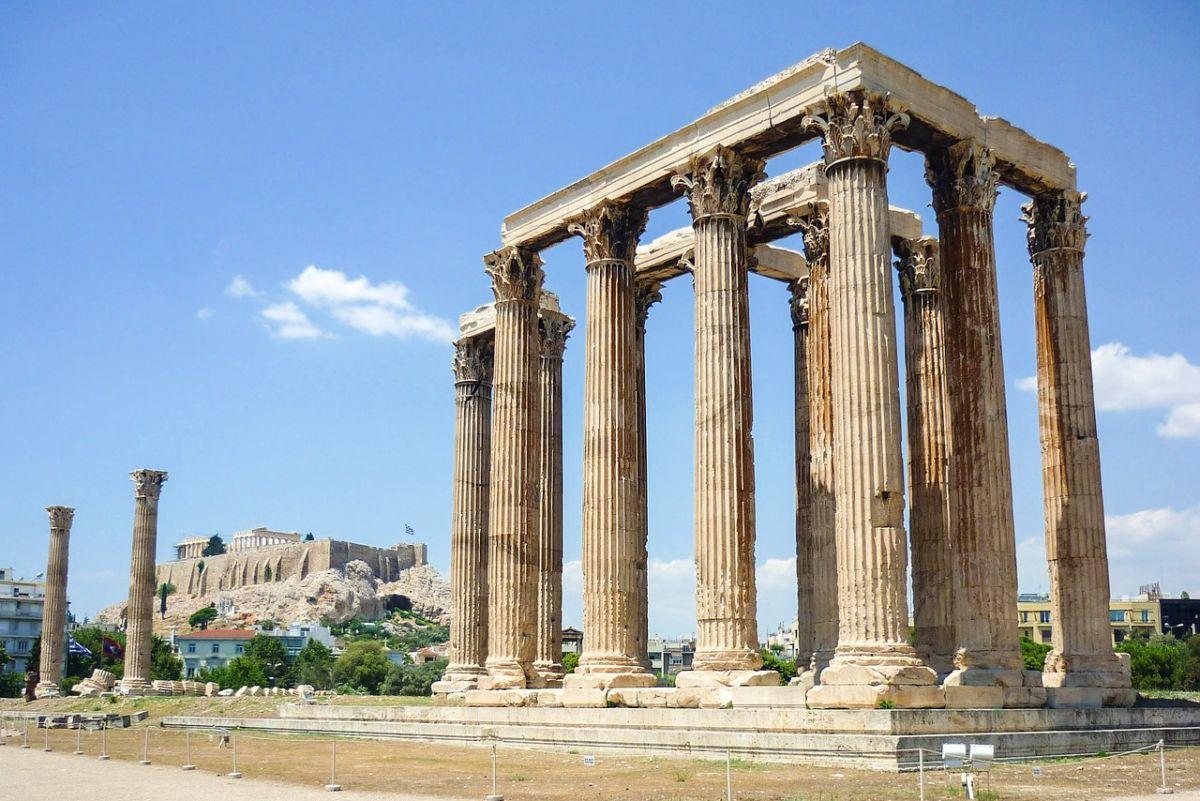
While the temple foundations date back to the 6th century BC, it was finally erected in honor of Zeus only in the 2nd century of our era by Emperor Hadrian. It used to house the famous statue of Zeus, one of the seven wonders of the ancient world, and the Labors of Hercules were carved inside.
However, the temple has suffered a lot of damage over the centuries, including earthquakes and looting that left the building in a state close to what it is today.
9. Kerameikos
Kerameikos is a site known for its ancient cemetery, but also for its ancient ceramic district that was located at the entrance of the gates of Athens.
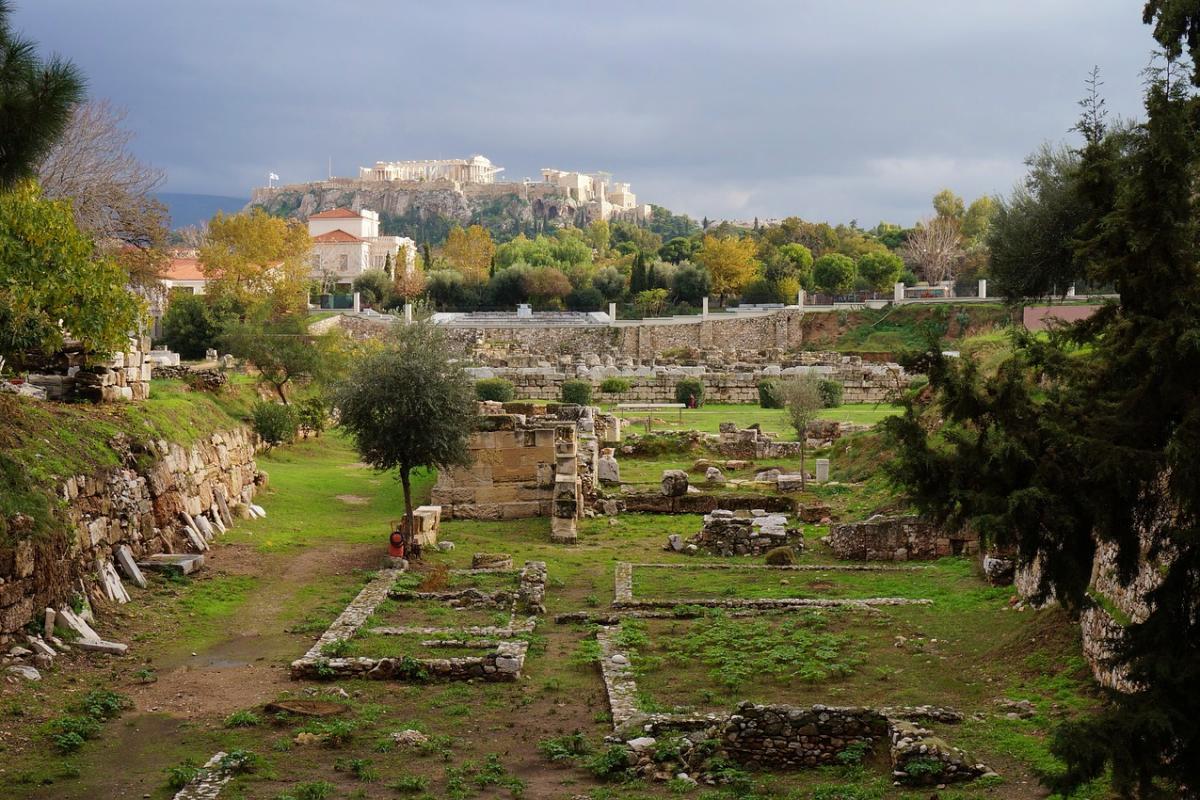
Indeed, Kerameikos was above all the district of the potters, from which it takes its name (Kerameikos meaning ceramics). Its location was strategic, close to the city to sell pottery to the Athenian citizens and to the river Iridanos and clay useful to their craft.
The cemetery is better preserved than the district with stelae dating from the 7th century BC, although many of them are actually copies. The originals are preserved in the archaeological museum or on-site in the Archaeological Museum of Kerameikos.
10. Hadrian’s Library
Hadrian’s Library is a building erected in the 2nd century at the time of Emperor Hadrian who logically gave it his name. It is located in the district of the Roman Agora, not far from Monastiraki Square, the Stoa of Attalus, and the Tower of the Winds.
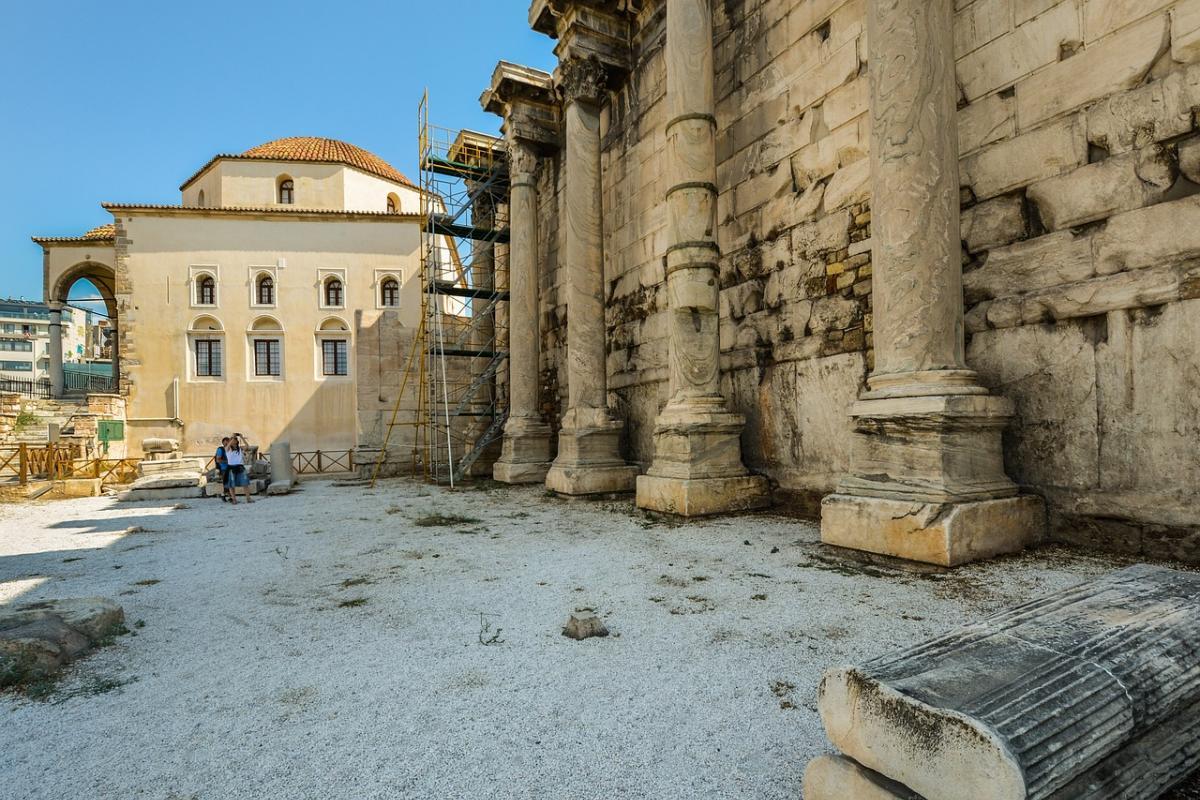
In Hadrian’s time, this library housed nearly 20,000 papyrus manuscripts. Emperor Hadrian was truly a philhellenic and humanist, and his goal was to preserve them as long as possible. Unfortunately, once he passed away, it suffered several damages and had to be renovated continuously.
Nowadays, the remains of the library consist of 4 marble columns of Corinthian type that can be visited for the delight of ancient Greek culture lovers.
11. Hadrian’s Arch
Hadrian’s Arch is a large gate located only a few meters southeast of the Acropolis.
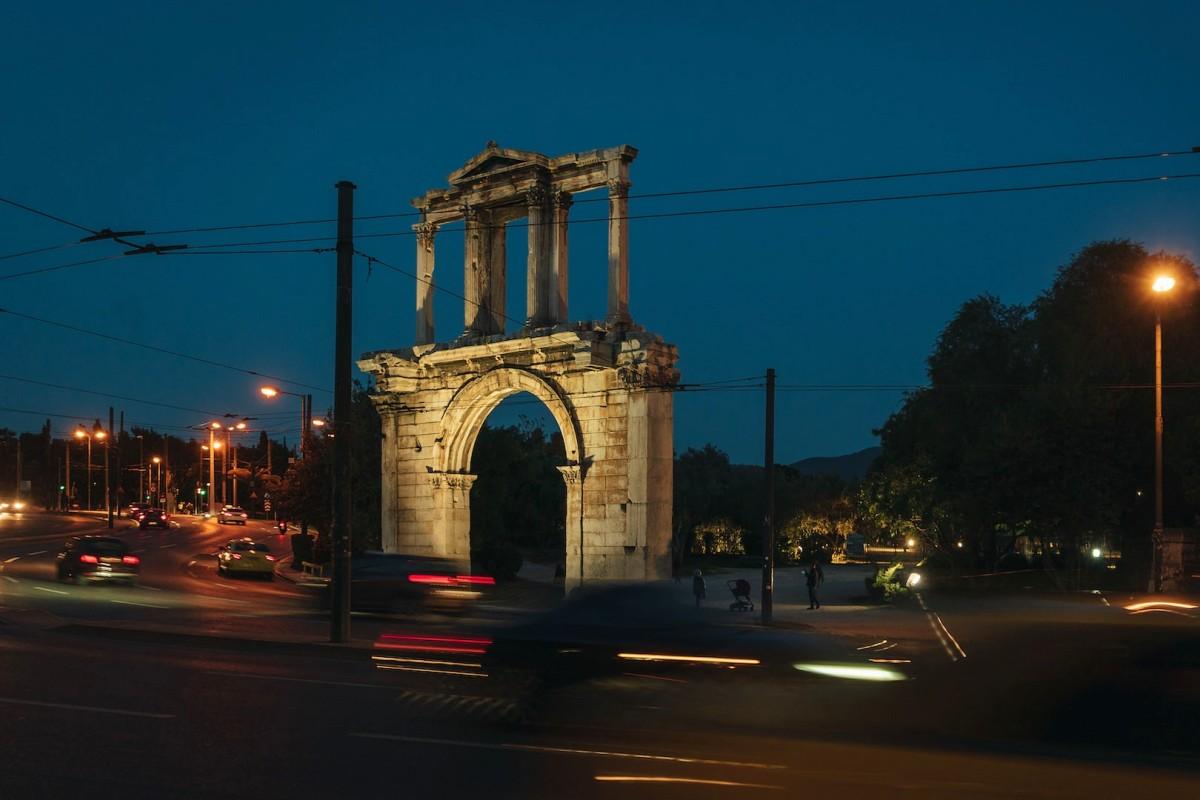
The building was built in 131 in honor of the Roman emperor Hadrian, on the occasion of the opening of a new part of the city, the Roman district of which we can still see the Olympieion. By the way, the arch has 2 inscriptions: on the old city side is written “This is Athens, the ancient city of Theseus”; and on the new district side “This is the city of Hadrian and not of Theseus”.
Composed of a triumphal arch in Roman style on the lower part and a set of Corinthian columns, the monument of 18 meters high impresses with its perfect symmetry.
12. Temple of Hephaestus
The temple of Hephaestus, also known as Hephaisteion, is an emblematic monument of Ancient Greece located in the northwestern part of the agora in Athens.
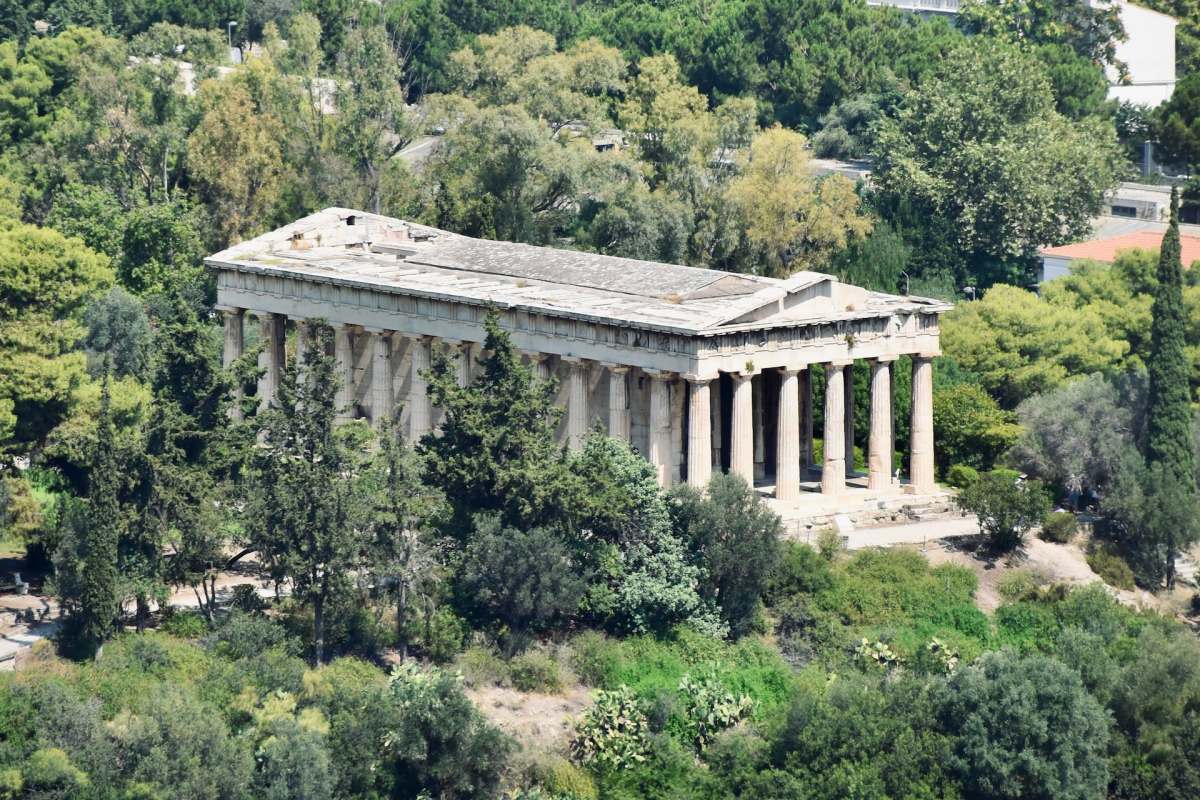
Hephaisteion is a majestic temple built in marble whose roof and columns are still intact to this day. It is one of the few best-preserved monuments in Greece.
Built between 450 BC and 415 BC under the command of Pericles, the decorative carvings on the temple showcase the breadth and rigor of the Ionic and Doric designs in its construction.
13. Roman Forum of Athens
The Roman Agora is a vast esplanade lined with the remains of marble colonnades dating back to the 1st century B.C. At that time, this vast public square hosted merchants’ stalls and served as a gathering place for political and philosophical discussions.
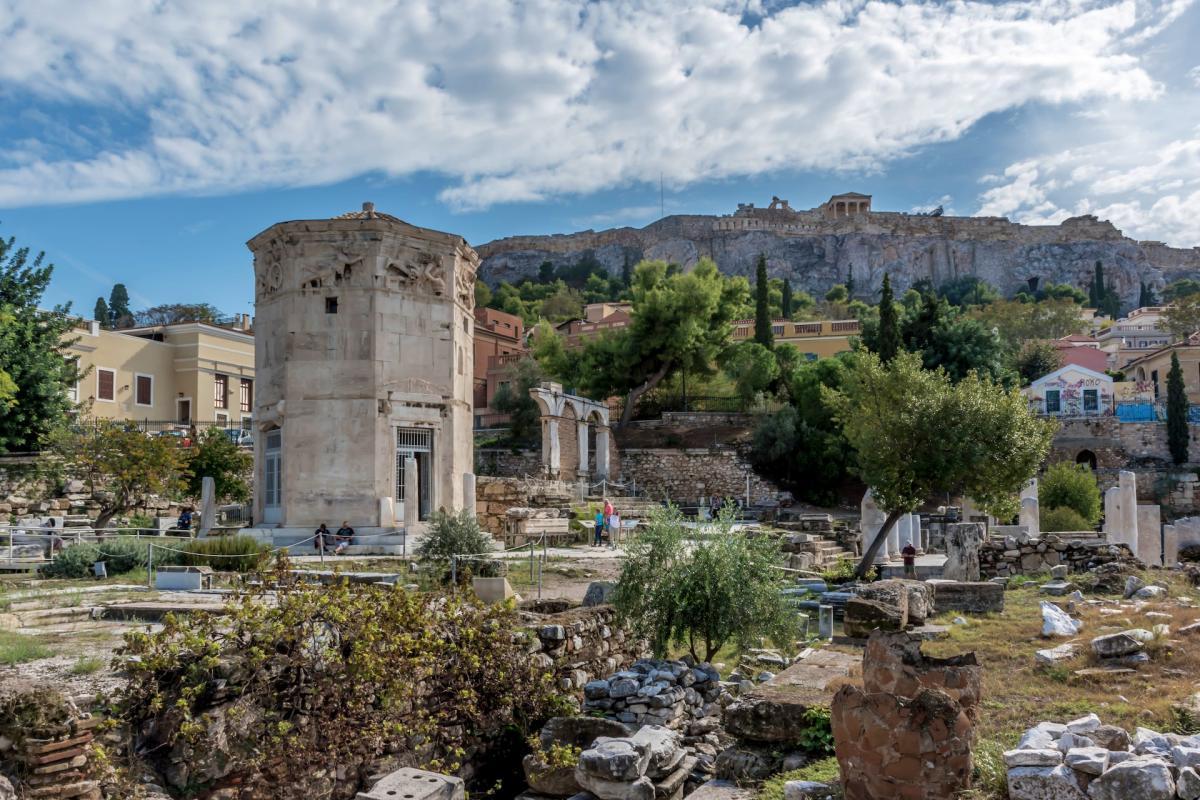
Its construction was decided by Emperor Augustus considering that the ancient Agora was too small. It was later enlarged at the request of Emperor Hadrian.
Flanked by the Tower of the Winds, the Roman Agora includes several remains to visit, including those of a sundial clock and those of an Ottoman mosque.
14. Panathenaic Stadium
Standing near the Zappeion and the National Garden, the Panathenaic Stadium is the only U-shaped, all-marble stadium in the world.
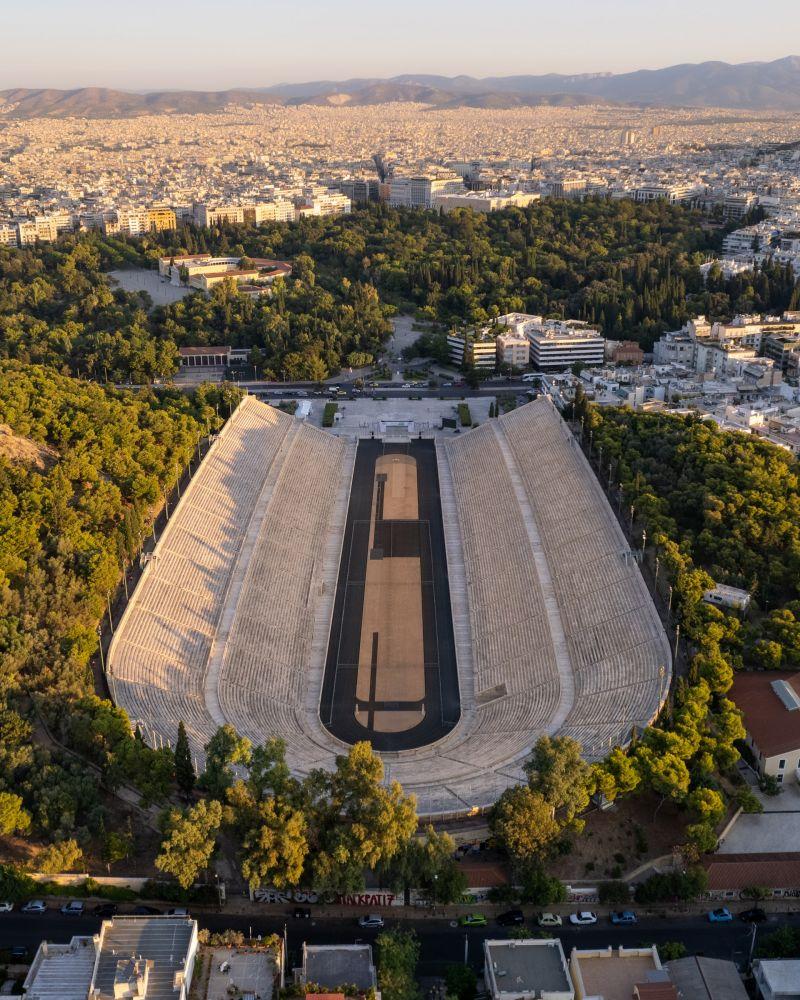
It was erected in 330 BC to host the ancestor of our modern Olympics, the great Panathenaeus. It got renovated, covered in marble, and expanded to a capacity of 70,000 spectators by Herod Atticus in 140 AD. After the fall of Rome, the stadium was left abandoned until the 19th century when it was rebuilt again to host the first modern Olympic Games.
Although the Panathenaic Stadium no longer meets the current standards for hosting athletics competitions, it is now a major ancient Athens landmark much worth visiting.
15. Stoa of Attalos
The Stoa of Attalus is a massive two-story building erected in the 2nd century BC. Located in a strategic area just northwest of the Acropolis, this building was a true commercial center and meeting point for the Athenians in ancient times.
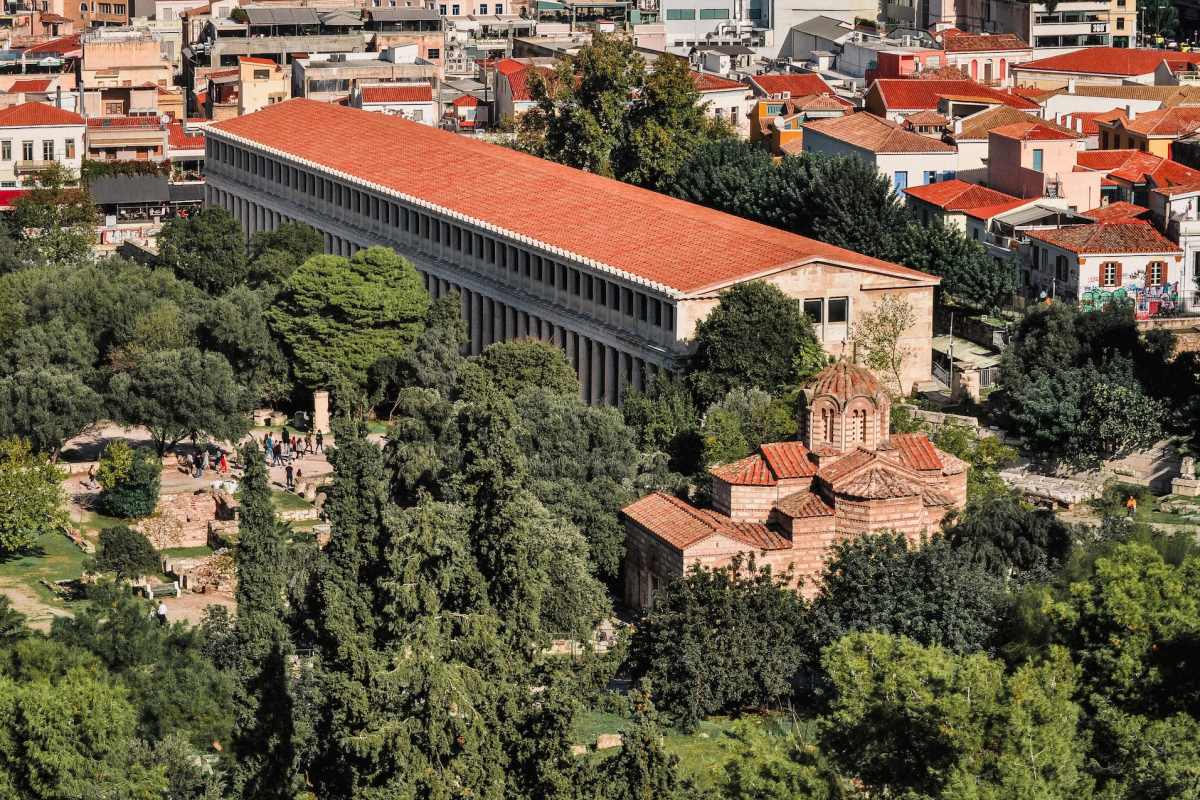
The stoa has an impressive colonnaded facade with Doric columns on the first floor and Ionic columns on the upper floor. It was probably used as a model for other buildings in the Roman world.
Today, the Stoa of Attalus houses the Museum of the Ancient Agora, which is often used for special ceremonies.
Other Famous Monuments in Athens
Although Athens is mainly known for its ancient sites, the city has other fabulous assets that are worth a visit.
Let’s discover together the other side of the Greek capital through these 11 must-see landmarks Athens has to offer!
16. Acropolis Museum
It is impossible to remain indifferent when visiting the remarkable Acropolis Museum! Situated at the foot of the Acropolis, it is the most visited museum in Greece.
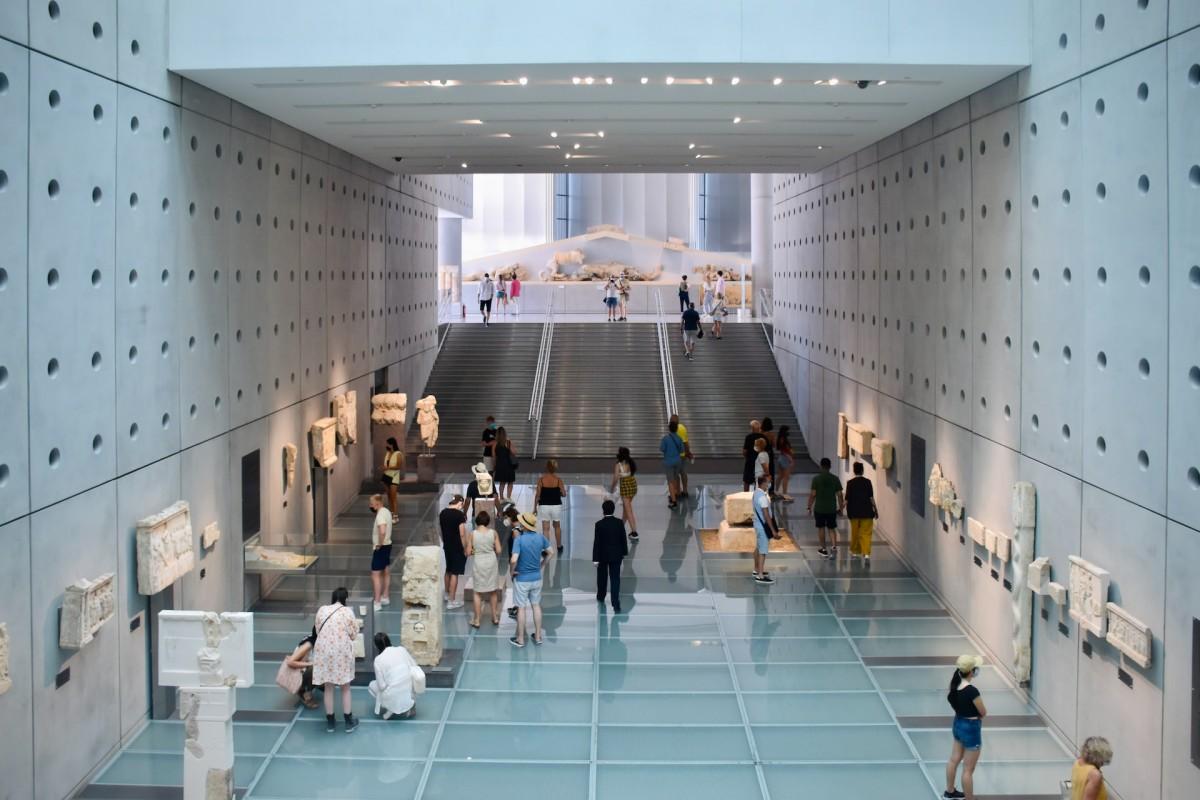
Opened in 2009, this ultra-modern building gathers 4,000 artifacts of which at least 300 are true masterpieces, all coming exclusively from the Acropolis hill. Thus, you won’t find in this museum any object from any other part of Greece or even from any other part of Athens.
If you’re a history enthusiast, we advise you to visit the museum before seeing the Acropolis itself, as it allows you to better understand this sacred site which represents the essence of classical culture in the ancient world.
17. National Archeological Museum
Just a few steps north of Omonoia Square, this other museum features more than 20,000 varied works from prehistory to antiquity, making it one of the most important museums of archaeology and ancient art in the world.
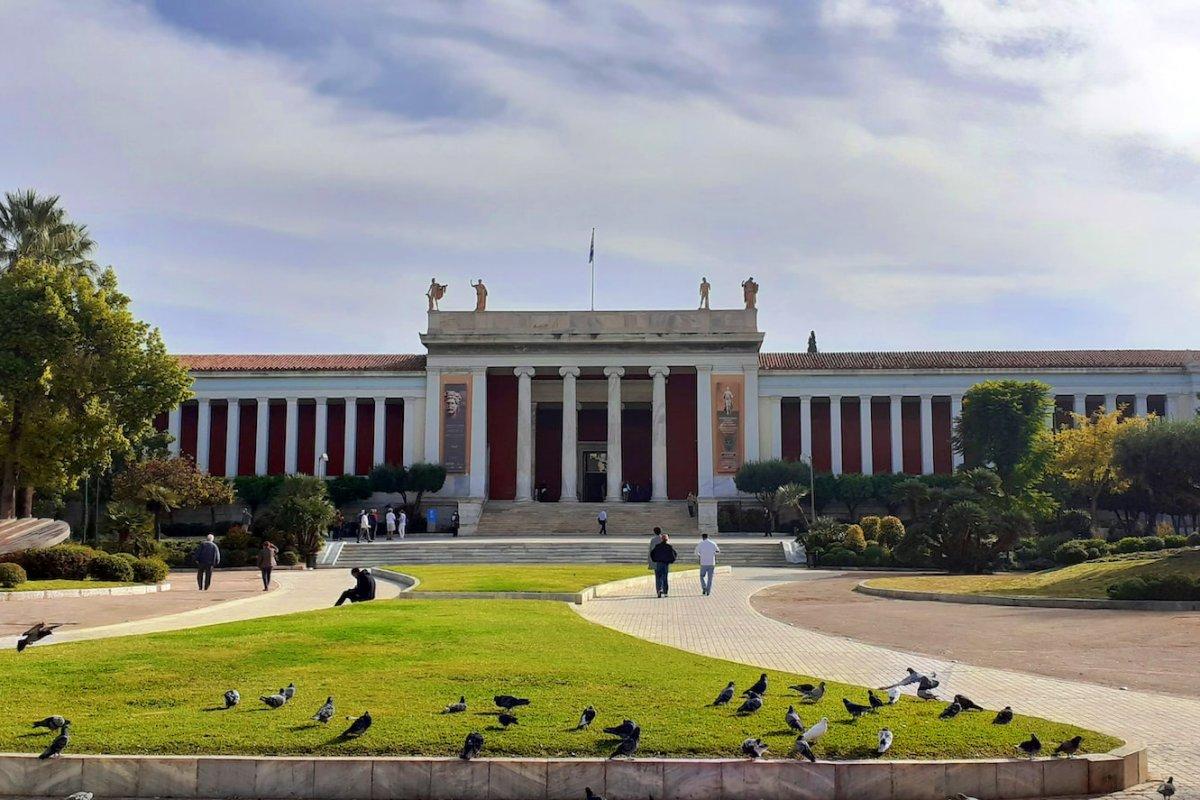
The museum’s history hasn’t been a smooth one as it took more than 50 years for it to be built! Initiated by Governor Kapodistrias in 1829, the museum was first installed on the island of Aegina off the coast of Athens, then moved several times as the collections grew. It wasn’t until 1866 that the construction of a building dedicated to the museum began, and it wasn’t fully completed until the late 1930s.
Today, the National Archeological Museum gathers works from all the main archaeological sites of Greece and is a must for any itinerary in Athens.
18. National Garden
True Eden in the heart of the city, the National Garden or Amalia Garden is located behind the Greek Parliament.
The creation of this garden was initiated by Otto I of Greece in 1836, in honor of his wife Queen Amalia of Oldenburg. The project was assigned to botanist Frederick Schmidt, then succeeded by Louis Bernard to create an English-style garden.
Today, the park is open every day. Both locals and tourists alike love to stroll through its 15 hectares for a lunch break or a simple stroll to discover its small zoo and the flora and fauna that it harbors.
19. Syntagma Square
Right next to the National Garden and the Greek Parliament is Syntagma Square. As a central place of local life, it is one of the most important squares.
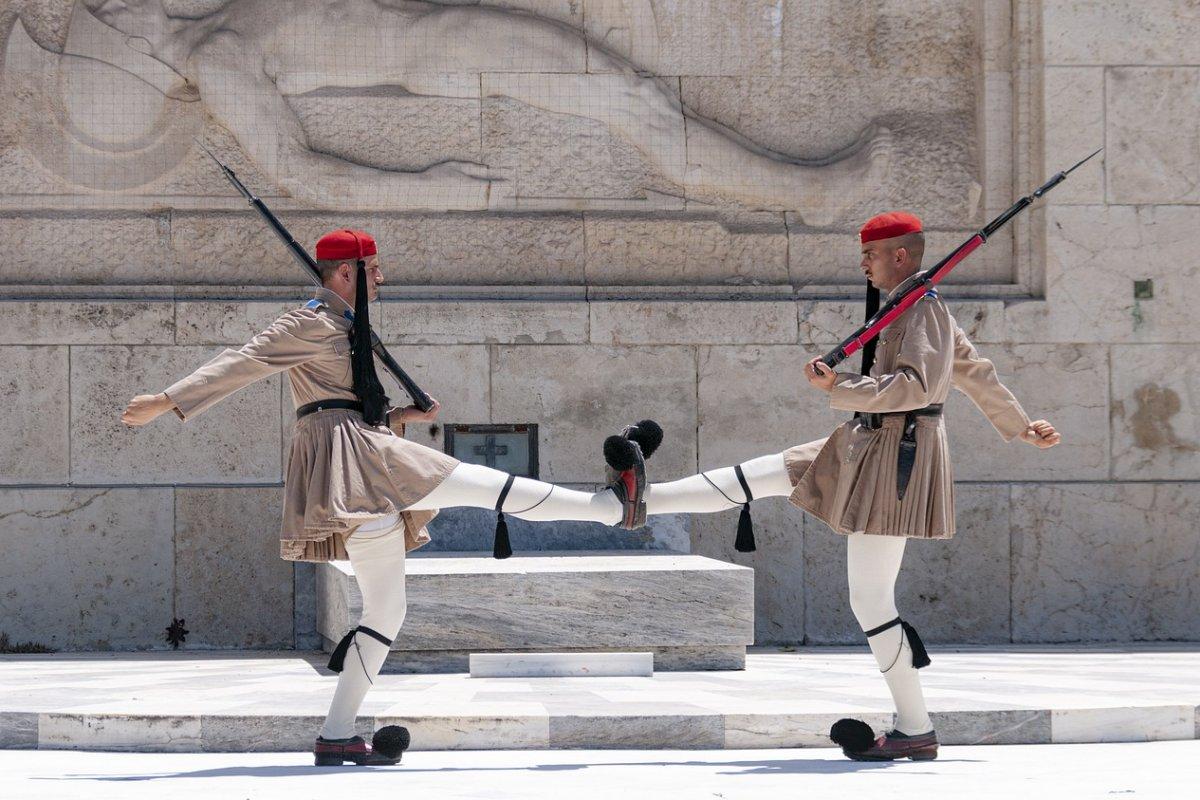
With its modern architecture, it is a very dynamic place of passage where locals and visitors cross paths with the political, social, and tourist life.
The square was chosen to house the famous tomb of the unknown soldier, watched over by the changing of the guard: every hour, the Evzones begin an immutable and very ceremonious ritual, just like the soldiers of Buckingham Palace. Very popular with tourists, this attraction is a favorite place for a photoshoot!
20. Mount Lycabettus
Mount Lycabettus, also known as Lykavitos Hill, is the highest point in Athens as it stands 277 meters above sea level.
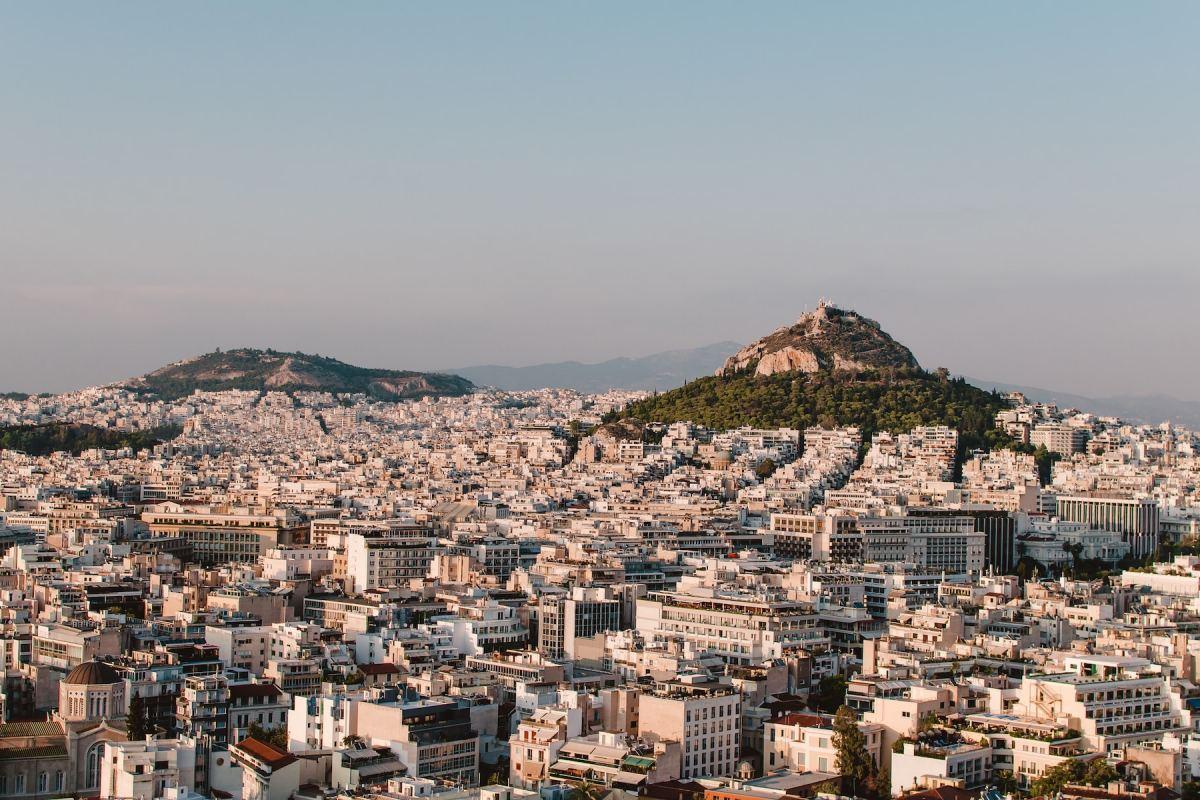
According to the legend, the Lycabettus would’ve been accidentally dropped here by the Goddess Athena who would’ve been surprised by two crows: a sign of bad omen which would’ve made her release her rock, intended for the fortification of the Acropolis.
Today, the famous rock has become a hill and stands in the middle of Athens, offering in addition to its incredible green setting, an unobstructed view of the city. Accessible on foot (30 minutes walk), by car, or by funicular, the islet hosts at its top the pretty Saint-Georges chapel which is enthroned there, facing this urban ocean.
21. Panagia Kapnikarea Church
Located in the heart of the city, the church of Panaghia Kapnikarea is one of the hidden gems of the city of Athens.
Indeed, despite its central location just a few steps from the Acropolis, the church is often overlooked by visitors to the city. However, those who take the time to explore this hidden gem are rewarded with a unique insight into Athens’ past.
Built over an ancient temple in the 11th century, the church of Panaghia Kapnikarea is a beautiful example of Byzantine architecture. Its striking exterior has been well preserved and inside, the church is adorned with mosaics and frescoes that are well worth a look.
22. Plaka
Plaka is a picturesque area located right at the foot of the Acropolis you can’t miss, even if spending only a single day in Athens.
![]()
This quarter full of charm is both the historical and tourist heart of the Greek capital. You will find a maze of small narrow streets with stairs, low houses with flowers, vegetation in abundance in some places, no or few cars, many cafes, and taverns… It is also here that you will find Anafiotika, a mini village with a Cycladic style.
Very popular among tourists, it’s an ideal place to buy some souvenirs, to eat or simply to sit and rest in the small labyrinthine streets to soak up the local culture.
23. Monastiraki
In the heart of the city center, a few steps from the Roman Agora and just below the Acropolis is the Monastiraki square and the eponymous district. This former Turkish quarter is now a very commercial, popular, and lively area.
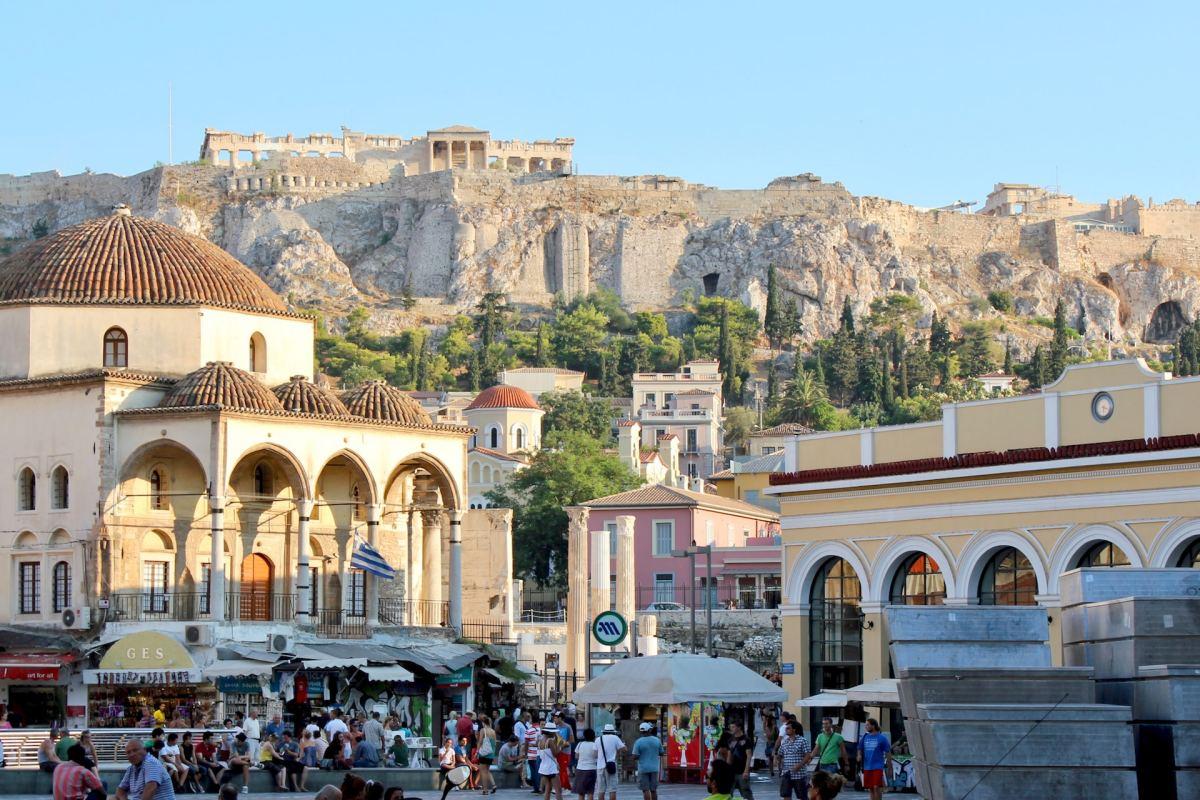
The neighborhood is home to many clothing and souvenir stores, but the main shopping area is the Monastiraki flea market. It is held every day of the week but is bigger on Sundays. Everyone will come to stroll and buy antiques, reproductions, and coins, but also old books, second-hand clothes, trinkets, and jewelry…
In the afternoon and in the evening, many street artists offer animations. You will also find many bars and restaurants where you can taste local dishes.
24. Philopappos Hill
Located in front of the Acropolis, Philopappos Hill and its monument are waiting for you on the heights at about 150 meters above sea level. This hill has inspired many poets and artists for good reason: its panoramic view on the Acropolis and its sunsets have something magical.
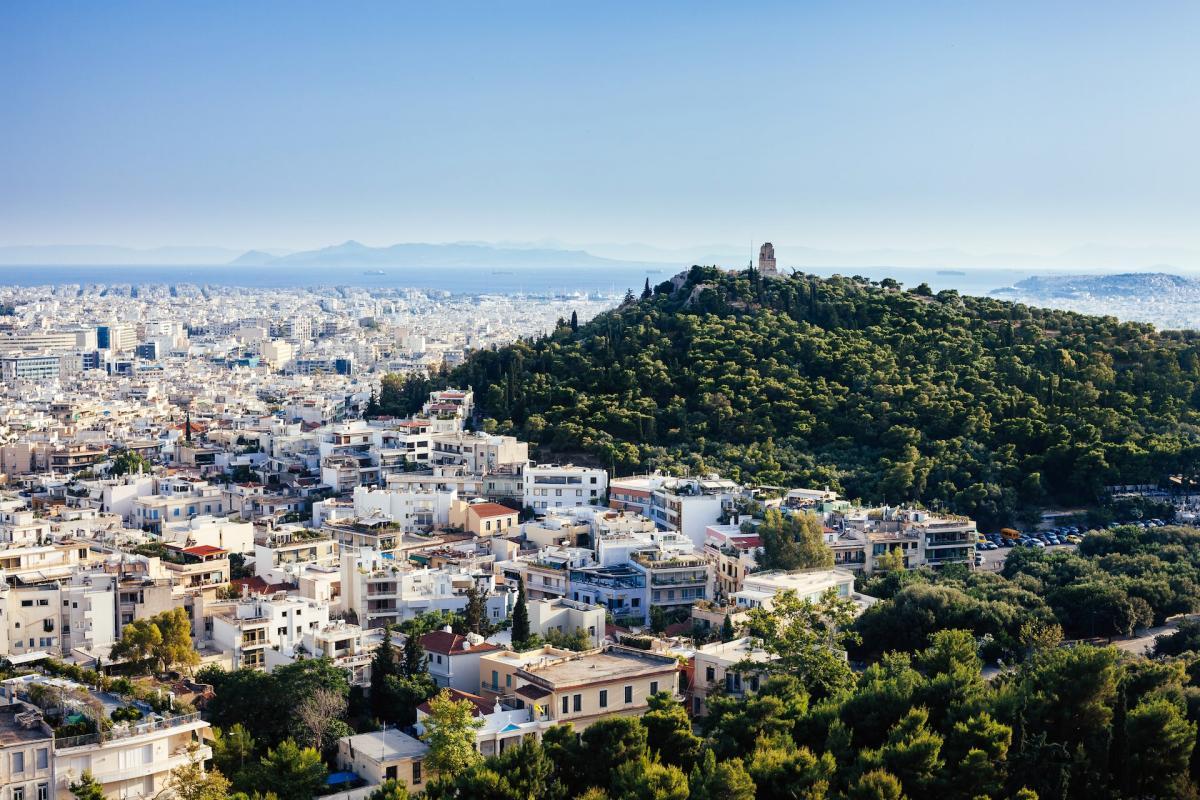
To get there, just take the path near the church of Santa Agia Marina. It is a beautiful walk through the maze of paths shaded by pine trees leading you straight to these places that have marked centuries of history.
Every year on the first day of Lent, the hill is assaulted by hundreds of Athenians who traditionally gather here to fly kites. Don’t miss the event if you are there at that time!
25. Piraeus
Easily accessible by subway from the center of Athens, Piraeus is an unmissable passage to the Greek islands and a major tourist attraction.
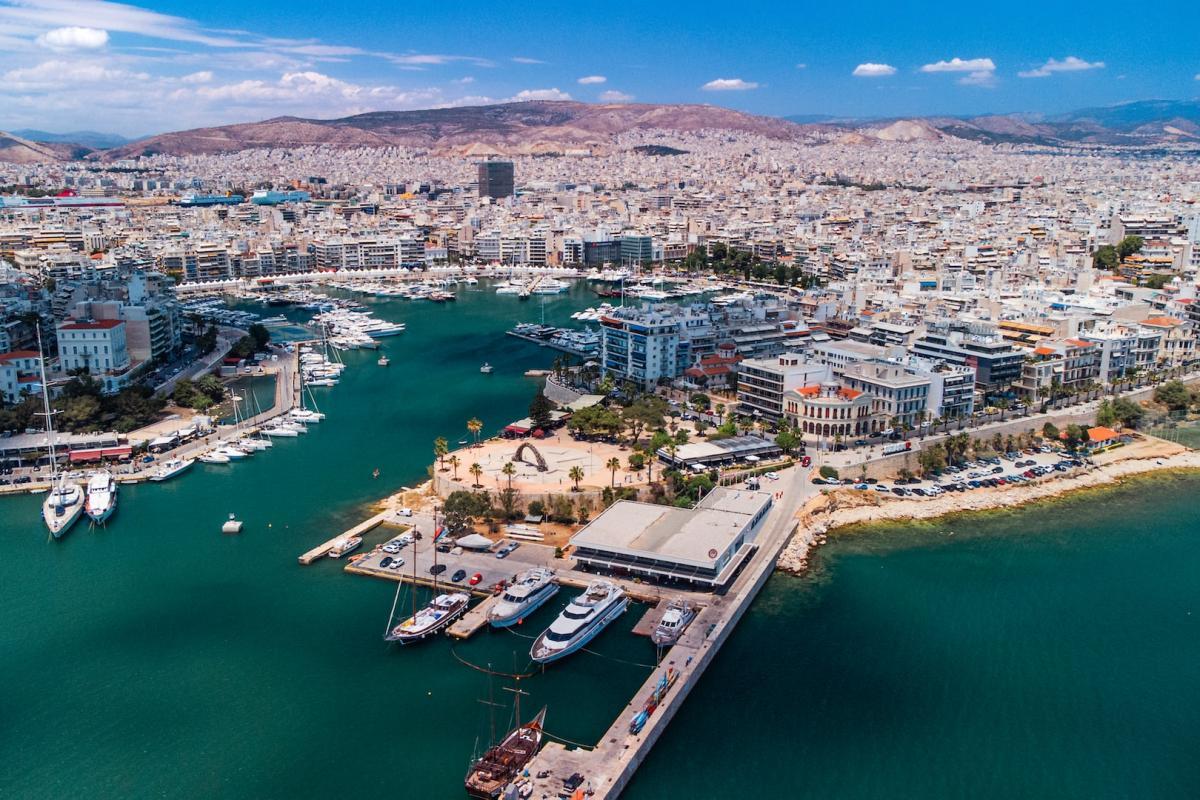
The city has two marinas, the Zea marina and Mikrolimano, both offering an ideal setting for strolling. You can enjoy the Greek rhythm by sitting on the terrace of a café or admiring the beautiful houses along the water.
If we like to stroll along the quays, we also like to observe the town from the top of the Kastella area which offers a bird’s eye view of the Aegean Sea, Athens, and its Riviera.
26. Vouliagmeni Lake
Tired of the city? Go to the Vouliagmeni lake nestled at the foot of a cliff south of Athens at about 40 min drive/bus from downtown.
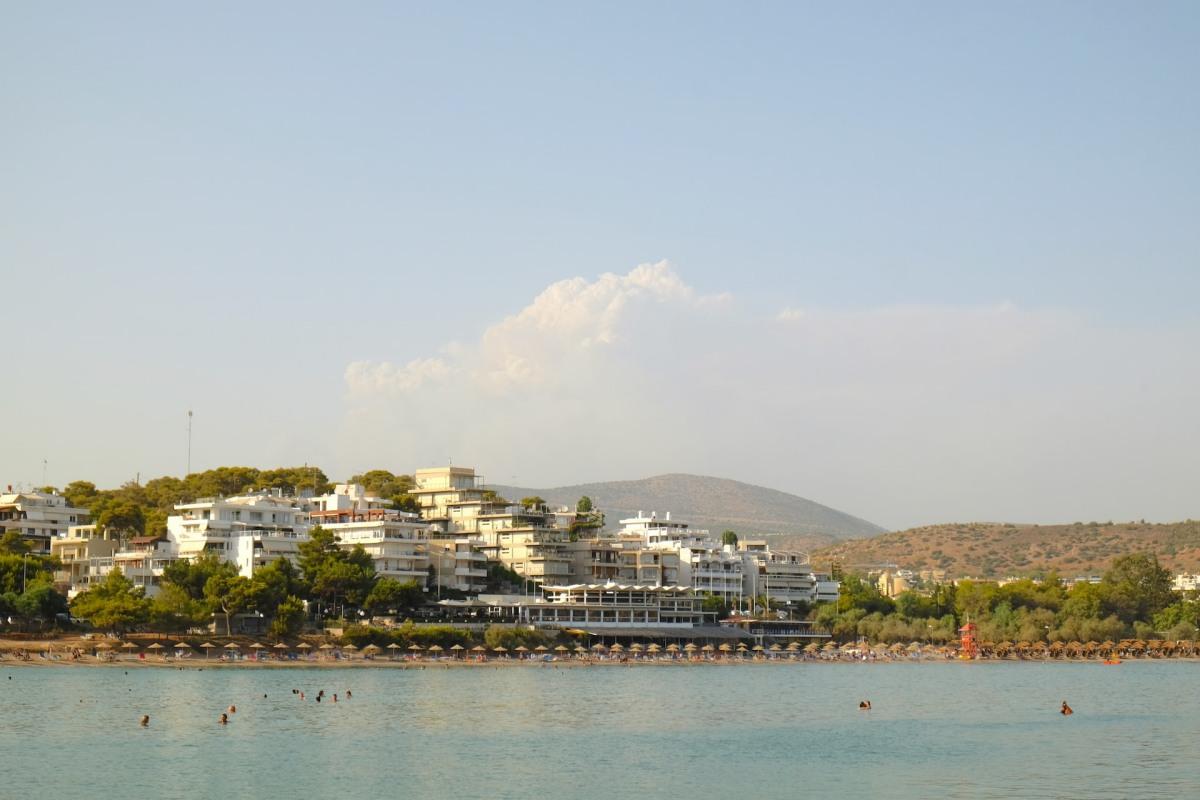
Its warm waters welcome you for a moment of relaxation all year round since the water is at a minimum temperature of 22 degrees, even in winter. This real open-air spa is known for its therapeutic virtues, especially its small fish, which are prized for their “pedicure sessions”.
The more sporty of you will appreciate practicing nautical activities such as sailing, kitesurfing, or kayaking. If you like swimming, take your mask, you won’t be disappointed as the funds reach beautiful depths in the center.
Famous Athens Landmarks Map
Here is our map of the 26 famous landmarks in Athens Greece listed in this post. To get it, simply click on the image below to open it in Google Maps. Then click on the “star” icon to save it to your own maps.
I hope you could’ve made your list of the must-see Athens Greece landmarks thanks to this guide. Don’t hesitate to comment below if this is the case, I would be very pleased to read your feedback!
Loved this post? Then share it with your friends by using the buttons below, I’m sure they’ll love it! 😊
Pin this to Pinterest!
Enjoyed this guide? Then help a fellow traveler and pin it! They'll most definitely love you for it, 100% guarantee.
